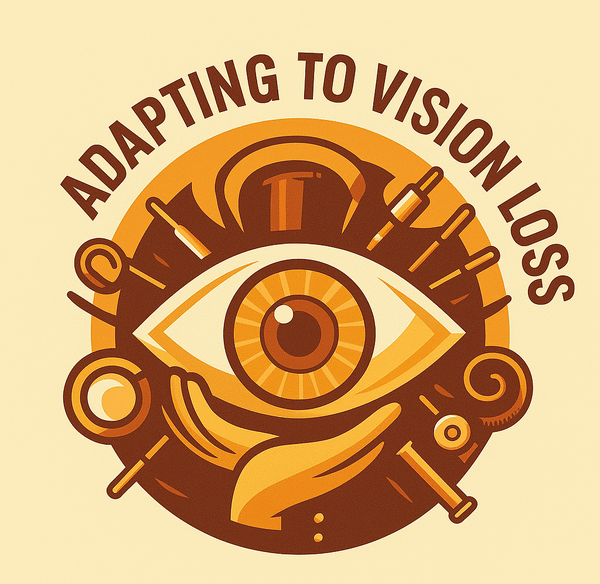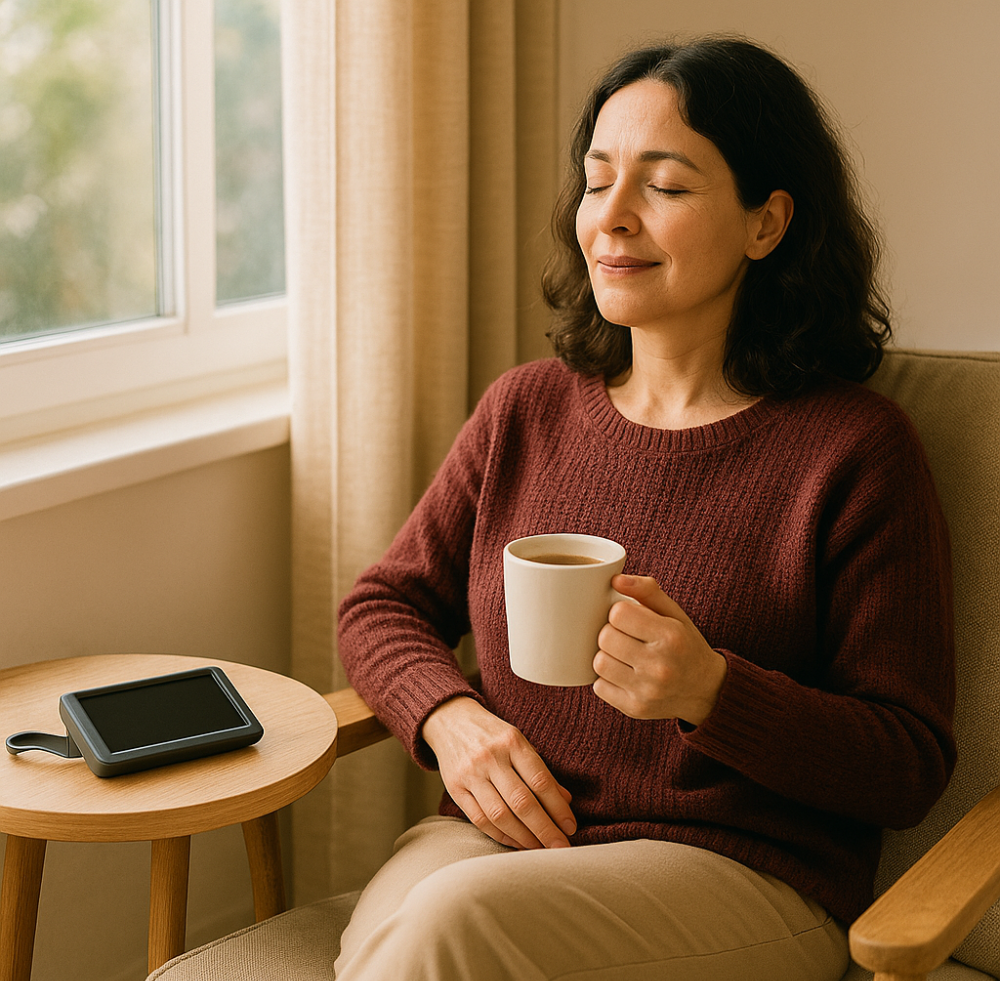Real-life tools, routines and strategies that help restore confidence after vision loss—starting with small, manageable changes.
Vision loss can feel like it pulls the rug out from under everyday life. Suddenly, routines that once felt second nature—making coffee, crossing the street, or navigating the grocery store—become uncertain. I know that feeling all too well.
But I’ve also learned that building independence with vision loss is not only possible—it’s empowering.
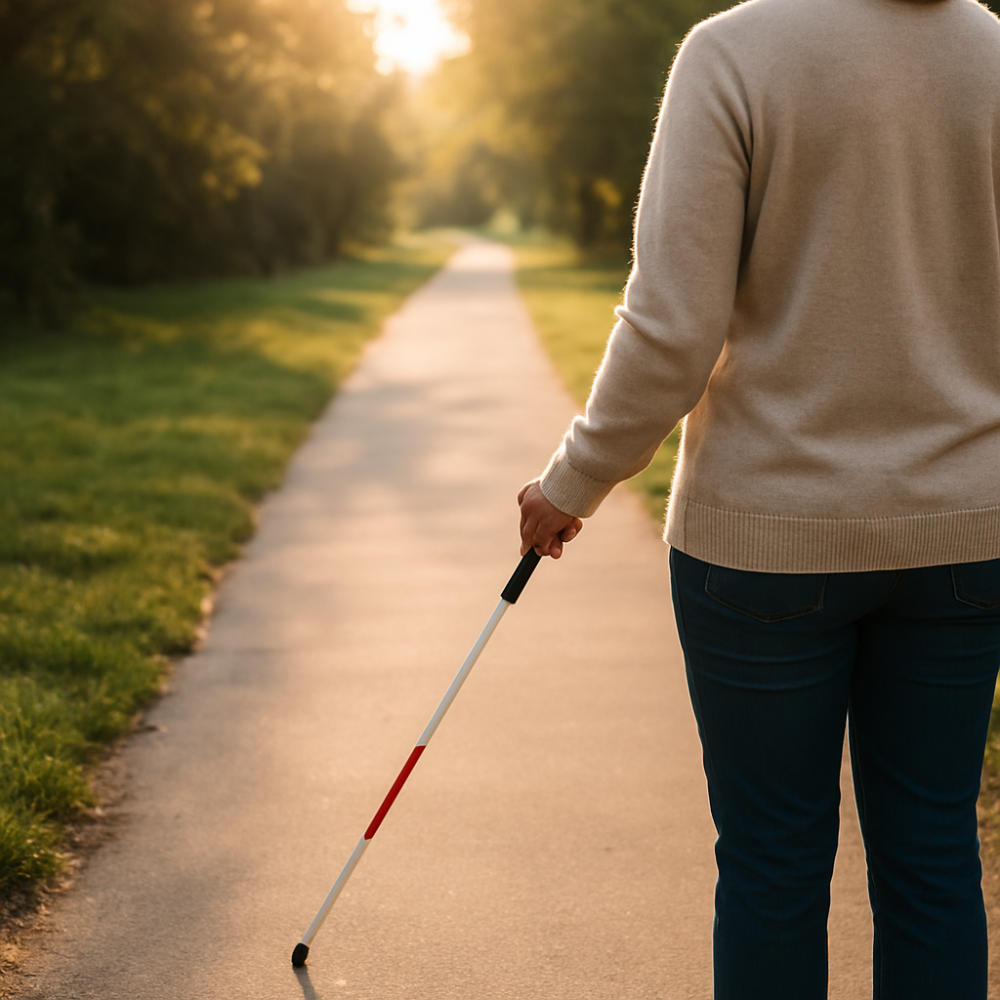 Building independence begins with a single step—no matter how uncertain it feels at first
Building independence begins with a single step—no matter how uncertain it feels at first
This article shares the practical strategies and tools that helped me regain confidence, one step at a time. These aren’t one-size-fits-all solutions. They’re flexible, lived-in approaches I’ve tested myself, guided by both professional insights and personal experience. From small home adjustments to emotional resilience, everything here is part of a broader journey toward taking back control.
🧠 Understanding the Impact of Vision Loss on Daily Life
Before I could begin building independence, I had to come to terms with what vision loss actually meant for my everyday routines. It wasn’t just about needing more light or struggling to read small print—it was about rethinking how I navigated the world.
The truth is, losing vision doesn’t just affect how you see. It affects how you move, how you interact, and how you feel about yourself in those everyday moments. Suddenly, tasks I used to do on autopilot—pouring a glass of water, picking out clothes, walking through a crowded space—required conscious effort and often, creative workarounds.
One of the biggest lessons? Other senses can become powerful allies.
I began to rely more on:
- The sound of appliances clicking or timers beeping
- The texture of labels, buttons, and fabrics
- Even the smell of spices or laundry detergent to confirm what I was holding
I used to think these were fallback strategies—second-best to seeing. Now, I see them as part of a well-rounded skillset. Incorporating these senses made me more aware, more present, and honestly, more capable than I expected.
🪜 Getting Started: How Small Adjustments Build Big Confidence
When I first started adapting to vision loss, I made the mistake of thinking I had to change everything all at once. That idea alone was paralyzing. But over time, I realized that small, thoughtful changes—taken one step at a time—could quietly add up to something powerful.
Here’s what worked for me:
- Start with your space. I began by reorganizing one room—my kitchen. I cleared walking paths, labeled the most-used items, and made sure lighting was bright but not glaring. Suddenly, I didn’t dread making a cup of coffee in the morning.
- Label and mark what matters. Tactile markers, bump dots, and bold labeling helped me reduce guesswork. It wasn’t about labeling everything—it was about labeling the right things.
- Don’t be afraid to experiment. Some ideas didn’t work on the first try—and that’s okay. I gave myself permission to tweak routines, try new tools, and even laugh at my own flops.
- Celebrate the small wins. The first time I successfully navigated my apartment in the dark without bumping into furniture, it felt like a gold medal moment. Every little success mattered.
What I found is that confidence doesn’t return all at once—it rebuilds quietly.
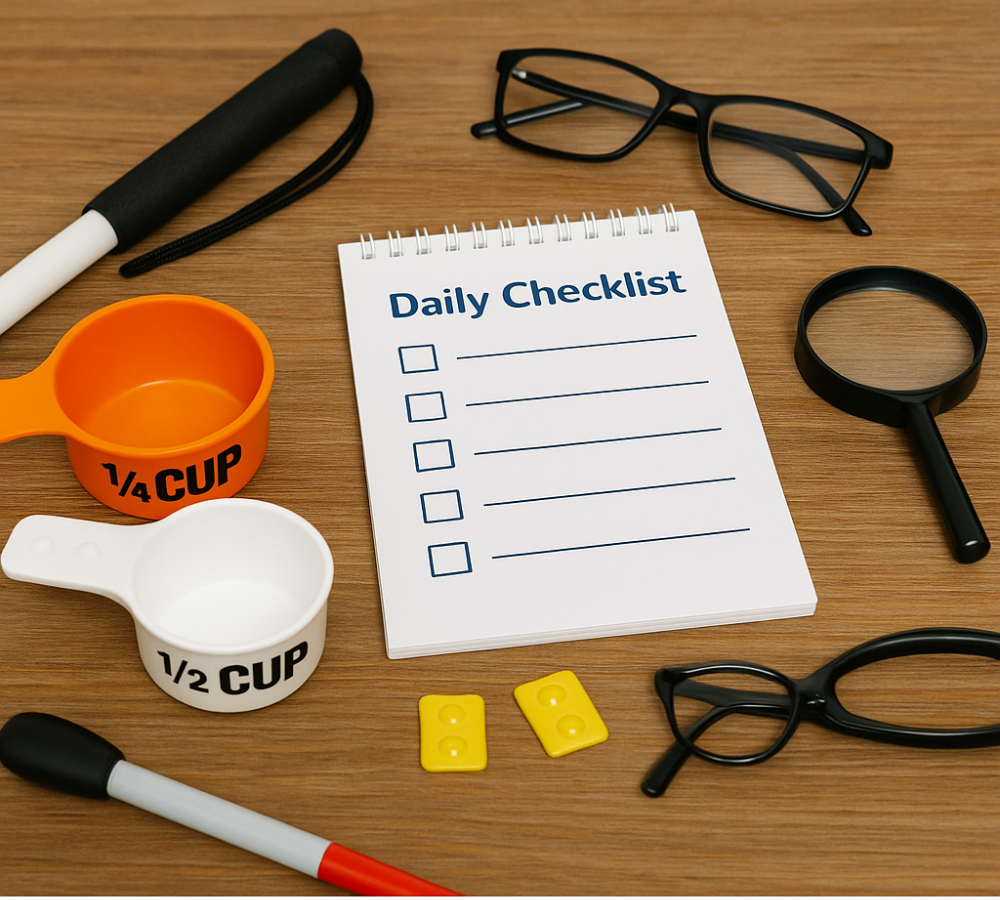 Small, consistent routines create confidence—one adjustment at a time
Small, consistent routines create confidence—one adjustment at a time
🧰 Key Strategies for Building Independence with Vision Loss
Once I understood how vision loss affected my daily routines—and once I gave myself permission to start small—I began assembling a toolkit of practical strategies.
Here are the approaches that made the biggest difference in my life:
🔊 Use Adaptive Technology That Matches Your Needs
- I use screen readers, magnifiers, and voice-activated assistants
- My smart speaker reads reminders, sets timers, and helps me stay on track
- I start simple, then add more as I grow confident
🕰️ Create Consistent Routines
- I organize my day in predictable patterns
- This helps reduce anxiety and creates a natural rhythm to follow
🧭 Get Orientation and Mobility Training
Tactile maps and auditory landmarks now guide me through new spaces
Working with a professional helped me build confidence step by step
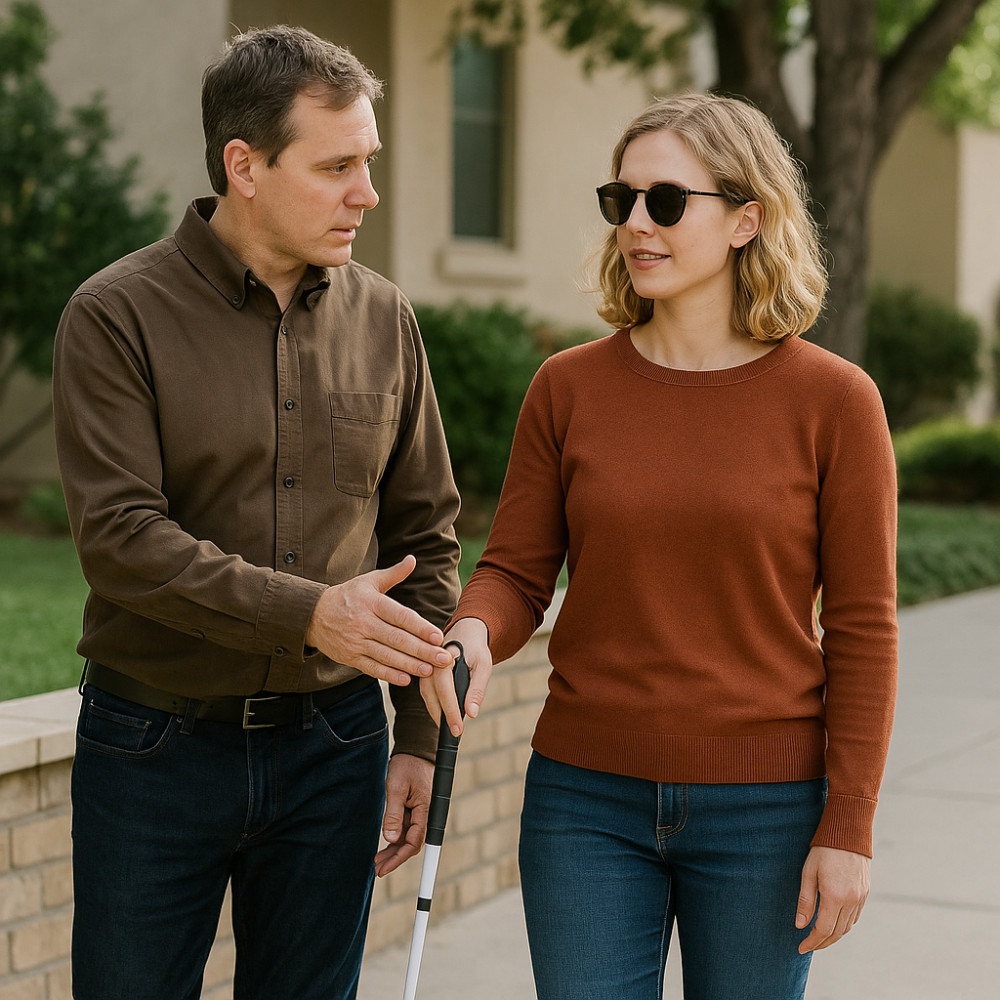 Orientation and mobility training builds confidence and safe travel skills through hands-on guidance.
Orientation and mobility training builds confidence and safe travel skills through hands-on guidance.
🏡 Make Simple, Smart Home Adjustments
- I use tactile markers, contrasting colors, and consistent storage
- These small changes make everyday tasks easier and safer
🤝 Connect with Others Who Understand
- Online communities and local groups offer real-world advice
- Sharing stories with others on a similar path reminds me I’m not alone
Each of these strategies made daily life more manageable—and showed me that independence is a skill I can grow over time.
🚧 Facing Common Challenges—And Finding Real Solutions
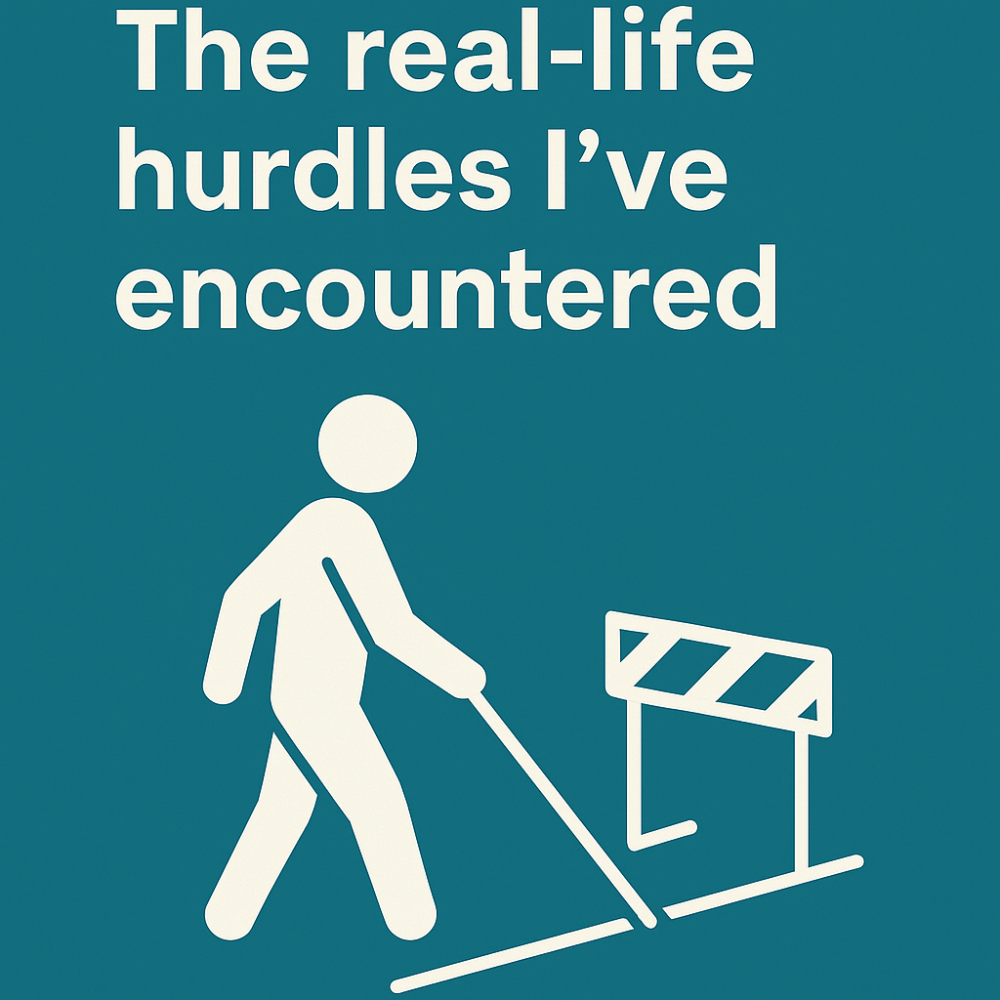 Real-life challenges like tech frustration, emotional strain, and social isolation can be tackled with practical strategies
Real-life challenges like tech frustration, emotional strain, and social isolation can be tackled with practical strategies
📚 Too Much (Conflicting) Information
Solution: I stick to trusted resources like VisionAware, AFB, and NFB.
🤖 Tech That Wasn’t So User-Friendly
Solution: I learn one new tool at a time and look for beginner tutorials.
🕳️ Feeling Isolated or Left Out
Solution: I join online forums and low vision communities where I feel understood.
🌧️ Emotional Overload
Solution: I write, I talk, I let myself feel it—and then I keep going.
Every challenge has a solution. It may not be quick, and it may not be perfect—but it’s real, and it works.
🚀 Going Further: Advanced Tools and Techniques That Make a Difference
When the basics were in place, I pushed further:
🖥️ Mastering Assistive Tech
I explored advanced screen reader functions and voice control
I set up tools that fit my routine and pace
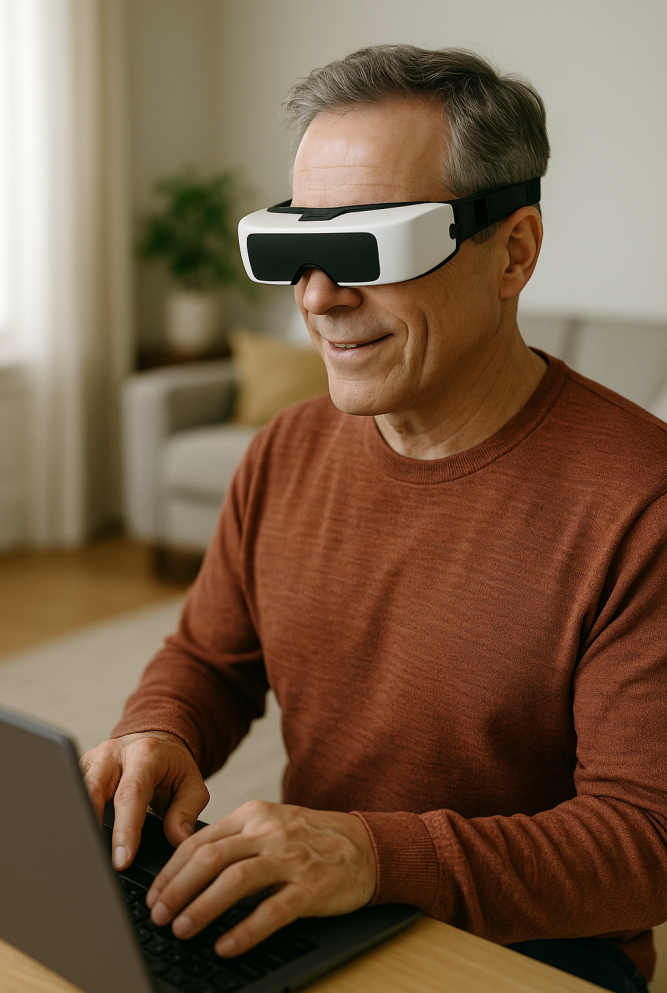 Advanced tools like wearable magnifiers empower users to take vision tech to the next level in daily life.
Advanced tools like wearable magnifiers empower users to take vision tech to the next level in daily life.
🦯 Leveling Up Mobility Skills
- I practiced unfamiliar routes using apps and professional support
- I expanded my comfort zone with each successful outing
🛋️ Refining Home Design
- I added contrast markings, simplified layouts, and better lighting
- I constantly tweak and improve based on what works best now
📚 Committing to Lifelong Learning
- I stay current with new tech, trends, and shared tips from others
- Independence grows with knowledge
These strategies aren’t just about efficiency. They’re about freedom.
🧭 Looking Back (and Forward)
Building independence with vision loss hasn’t been a single breakthrough moment—it’s been a gradual, deeply personal process. Some days were frustrating. Some felt like real victories. And most fell somewhere in between.
But with each step—each new tool, each habit I adjusted, each small success—I began to see that confidence wasn’t lost. It was just waiting to be rebuilt in a different way.
I still have moments where I struggle. That’s normal. But now I have strategies that support me, routines that empower me, and a mindset that reminds me: I am still capable, adaptable, and whole.
If you’re reading this and just beginning your journey, please hear this:
You don’t have to figure it all out at once. You don’t have to change everything overnight.
Start with one small thing.
Then another.
And slowly, steadily, you’ll build a life that feels strong again—even if it looks a little different than it used to.
👣 Author’s Note
This article comes from my personal experience of learning to live—and thrive—with vision loss. If it resonated with you, I invite you to explore the Emotional Wellness section of this site, where I share more reflections, coping strategies, and encouragement for navigating the emotional side of vision loss.
You’re not alone on this path—and you don’t have to do everything at once.
